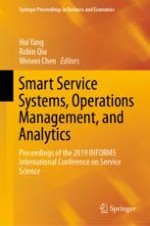2020 | OriginalPaper | Chapter
Predicting Metropolitan Crime Rates Using Machine Learning Techniques
Authors : Saba Moeinizade, Guiping Hu
Published in: Smart Service Systems, Operations Management, and Analytics
Publisher: Springer International Publishing
Activate our intelligent search to find suitable subject content or patents.
Select sections of text to find matching patents with Artificial Intelligence. powered by
Select sections of text to find additional relevant content using AI-assisted search. powered by
